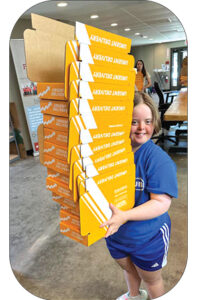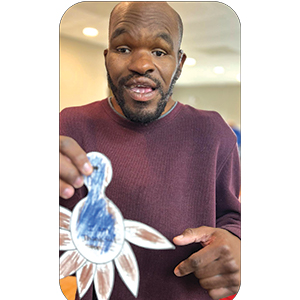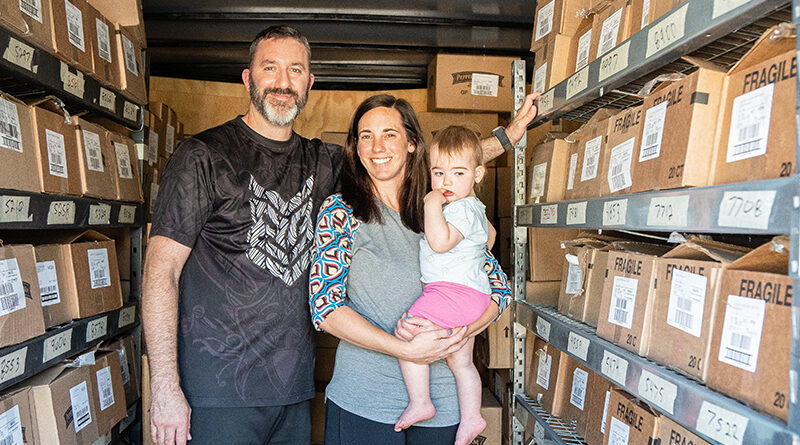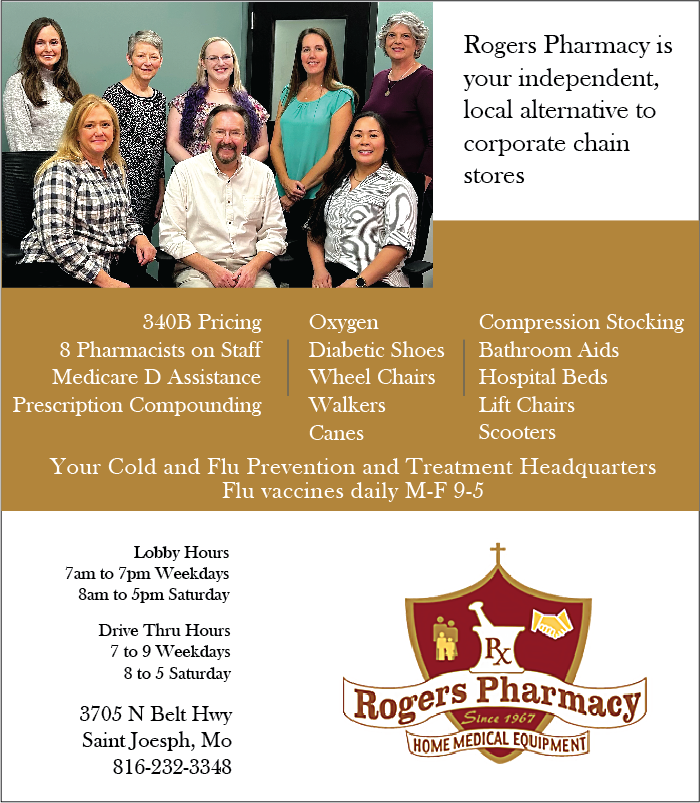The Business of Delivery
by Shannon Bond
Businesses come in all shapes and sizes, with new types being born each day, driven by need and new technologies. However, delivery routes are one staple would-be entrepreneurs may overlook. Delivery routes cover everything from newspapers to food to parcels. And buying a pre-existing route with a clear performance record isn’t that hard to do.
Scott Kipling, who owns several routes with his wife, Jess, explains how he started. “I originally discovered direct store delivery (DSD) routes when a friend asked me to help him on his Kansas City Star business route. The Star had residential routes that delivered to homes and business routes that delivered to grocery stores and convenience stores. After helping him a few times, I applied for a route. After signing a contract, I ran my own route for several years.”
Since getting started, Scott has worked on many routes, including the Independence Examiner, Wall Street Journal, Mission Foods, Mckee Foods (Little Debbie), Pepperidge Farms, and Snyder’s Lance. “We currently own two Pepperidge Farm snack routes, a Snyder’s Lance route, and are presently in the process of acquiring a Pepperidge Farm bakery route (bread).”
According to Grand View Research, the global last-mile delivery market accounted for 132.7 billion U.S. dollars in 2022. According to Business Wire, the global logistics market is valued at 4.9 trillion (on target to reach 6.5 trillion dollars by 2027). Last-mile delivery is expected to grow by more than eight percent by 2030. For companies dealing with logistics, the final leg of delivery accounts for more than half of the entire shipping cost. Whether that last mile is to a retailer or straight to a consumer, the business need is clearly there.
And while this article focuses on the direct store delivery model, it’s important to note for those route owners who deliver goods for retail companies to consumers that customers pay attention to performance. These may include FedEx or Amazon Delivery Service Partner routes. Research shows that about 80 percent of consumers report that they are quick to mark a company off its list if there are delivery issues. Performance is vital for behemoths like Walmart, Target, and Amazon.

Understanding the Delivery Route Business
At its core, a delivery route business involves transporting goods from one location to another, often between a distribution center and a set of predetermined customer addresses. Products for these include packages, food, wholesale goods, and medical supplies.
There are two main types of routes to consider:
Independent Routes: These routes are usually self-established by the business owner. You own and operate all aspects of the business, from building client relationships to managing deliveries.
Protected Routes: These are often franchised or contracted through larger companies like FedEx, Amazon, or a local bakery. As a route owner, you’re responsible for specific geographic territories. You are usually required to meet the service standards of the parent company.
Owners of protected routes are essentially distributors for a large company that must deliver their products to the retailer’s shelves (or consumer’s doorstep). As such, these companies guarantee that no other route operators will deliver to the agreed-upon region or route. For example, a bread route may include 10 grocery stores and two big box stores. Once the contract is signed, the route operator is the sole distributor, working with each store. And since the supplier needs to sell the most goods possible, they provide the marketing, sales, and special pricing while the route operator handles the logistics of ensuring the products are on the shelves.
Independent routes involve more risk but generally don’t cost as much. These routes include vending machines, ATM machines, medical supplies, and other types. These contracts are negotiated directly with the supplier and do not include a protected route. Retailers and consumers in this situation can shift their investment elsewhere, leaving the route owner scrambling. However, the route owner can take on more products in this situation, potentially offering higher profits in a freer market situation.
There are a lot of variables to calculate when deciding which type of independent or protected route to invest in and how much revenue will be generated. “It largely depends on the size of your route territory, number of accounts, possible expansion, as well as overhead expenses,” Kipling explains. Protected routes pay somewhere between 15 to 20 percent commission, but there are factors to consider. “With some routes, the contractor is responsible for inventory cost as well as promotional discounts given to the stores. Also, some routes you are simply a contractor whereas others, you are required to purchase territory sales rights to operate, in which case you will have fairly large payments to make.”

A Day in the Life
Route owners are responsible for picking up the goods from a warehouse, often early in the morning, and delivering them to stores, businesses, or consumers. The hours range from a few to many depending on the route type and how many routes one owns. For protected routes, the owner is paid by the brand, so increasing sales and performing well means making more money. Operators may work anywhere from two to five days per week, depending on the route. Direct store delivery route owners have a fair amount of freedom as long as store shelves are stocked, while direct-to-consumer route operators are at the mercy of the company they deliver for (such as FedEx or a retailer).
“My wife and I each run separate routes, and we have a contractor who runs our third route,” Kipling says. “Once the fourth route purchase is complete, I will move to that route to start building its sales back up, and we will hire an additional contractor to run my current route.” Scott and his wife own two large step vans, similar to FedEx-type trucks, and an enclosed trailer they pull with a pickup truck. Inventory is stored in a warehouse owned by Campbells, the parent company of Pepperidge Farm and Snyder’s Lance. Route operators must monitor inventory levels, ensure shelves are stocked, negotiate shelf space with store managers, and ensure sell-by and use-by dates of products, such as Goldfish or cookies, are current.
“We are paid as 1099 Independent contractors by Pepperidge Farm and Snyder’s Lance on a commission model. We make 20 percent commission on total sales on Pepperidge Farm routes and 16 percent commission minus stales [expired food packages] on Snyder’s Lance routes.”
Once they begin the fourth route, they will most likely purchase another step van. Kipling explains that the goal is to eventually own enough routes with enough revenue to contract delivery drivers for each so he and Jess can work from home and stay with the kids.
How to Get Started
Routes can be purchased from brokers or individuals and financed out of pocket, through a small business loan, or with cash. Websites like Route Tycoon and Upper are a great place to start researching, while sites like Routes for Sale and Biz Buy Sell list routes for sale. And it’s always a great idea to reach out to an existing owner to ask questions or about opportunities to shadow. Codie Sanchez, the founder of Contrarian Thinking and advocate for boring businesses, and Steven Bartlett, creator of Diary of a CEO podcast, praise this approach. They understand that many successful people, while busy, are still happy to share their knowledge and wisdom. Sanchez advises contacting them in small ways over time, treating them as mentors, and showing them how their advice has helped you. In this way, the experienced business owner becomes vested in your success. Many successful business owners explain that every person and every situation is a mentor and learning experience, and it’s hard to overestimate the value of mentorship.
As far as breaking into the delivery route business, newspaper routes, Kipling explains, are the easiest routes to operate since there is no inventory, but they are by far the least lucrative. And as the market has declined for print papers, they are probably not the target of entry they once were. Protected routes, however, offer more opportunity, and taking out a small business loan for a protected territory and delivery vehicle (truck or trailer) can pay significant returns over time and present the opportunity to grow, as Scott and Jess continue to do.

When you choose Fulfillment House, you help provide meaningful work to adults with special needs.
Fulfillment House offers printing, packaging, warehousing, and shipping for personal and professional needs.

 Name: Dasia
Name: Dasia
Age : 20
Dasia is one of our more recent hires at Fulfillment House. She has been part of our team for more than four months now. She enjoys all the tasks here and is always happy to jump in and help wherever needed.
Dasia is very active outside of work and has various interests. She enjoys playing video games and sketching on her iPad, especially anime. She is quite a talented artist! Dasia also loves animals and spends a lot of time with them. She helps take care of her many pets at home, including four dogs, four cats, four chickens, and two snakes. This is also her second year riding horses at Northland Therapeutic Riding Center, which she says is really fun!
Thanks for everything you do for Fulfillment House, Dasia!
Contact us for Print, Design, Shipping or Warehousing!
print@thefulfillmenthouse.org
www.thefulfillmenthouse.org
 The Fulfillment House began in 2018 as a passion project for two local business owners as one of their sons with Down Syndrome was navigating the often-difficult transition to life after high school. They saw the potential to take an existing business need and transform it into an enriching employment opportunity for adults with special needs.
The Fulfillment House began in 2018 as a passion project for two local business owners as one of their sons with Down Syndrome was navigating the often-difficult transition to life after high school. They saw the potential to take an existing business need and transform it into an enriching employment opportunity for adults with special needs.





